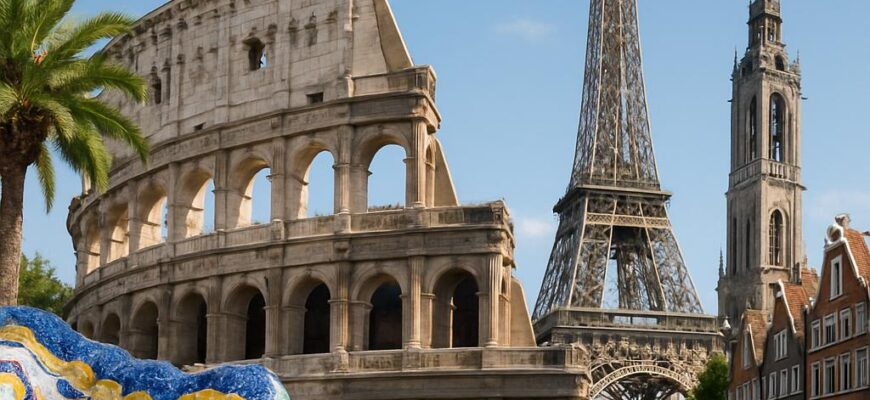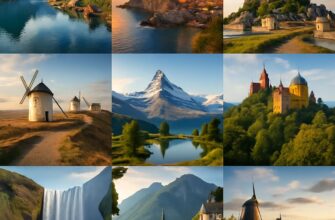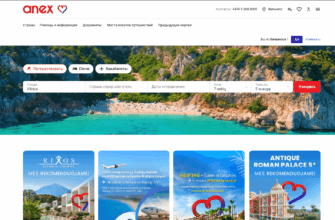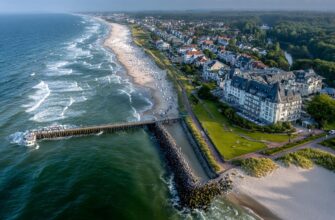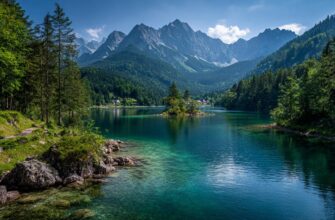Europe in 2025 feels both familiar and newly charged — old streets and fresh ideas rubbing shoulders. Cities have leaned into sustainability, smaller towns are staging surprising revivals, and transport networks have quietly become smarter, making multi-destination trips easier than ever.
This guide steers you toward the places and experiences that matter right now: where crowds are thinning, where food and culture shine, and what practical moves will save you time and money on the ground. Think of it as a map plus shortcuts for an intelligently adventurous trip.
- What’s changed for travelers this year
- Regional highlights: north, south, east, and west
- Western Europe: refinement and accessibility
- Northern lights and calm coasts: Scandinavia and Iceland
- Top destinations and why they matter in 2025
- Lisbon and Portugal’s coastal charms
- Rome and Italy’s deeper discoveries
- Athens and Greece beyond the islands
- Budapest and Eastern European value
- Croatia and the Adriatic coast
- Practical planning: save time and avoid common pitfalls
- Packing, insurance, and health
- Money and communication
- Sustainable and responsible travel choices
- Volunteer tourism and community initiatives
- Where to splurge and where to save
- Festivals, food, and culture not to miss
- Local experiences that change perspective
- Transport strategies: trains, flights, and driving
- Apps and passes worth knowing
- Preparing for surprises and staying flexible
What’s changed for travelers this year
Post-pandemic habits hardened into new services and expectations. Cities invested in pedestrian zones, micro-mobility solutions spread beyond capitals, and digital health and entry checks are less intrusive but more integrated with booking systems.
Another shift is value: inflation nudged tourists away from traditionally expensive capitals, making secondary cities and nearby regions more attractive. That redistribution means better experiences in places that used to be mere day-trip options.
Finally, a rise in curated, small-group cultural tourism gives travelers deeper access to museums, artisan workshops, and conservation projects. Expect fewer generic tours and more locally-led experiences that tell a place’s real story.
Regional highlights: north, south, east, and west
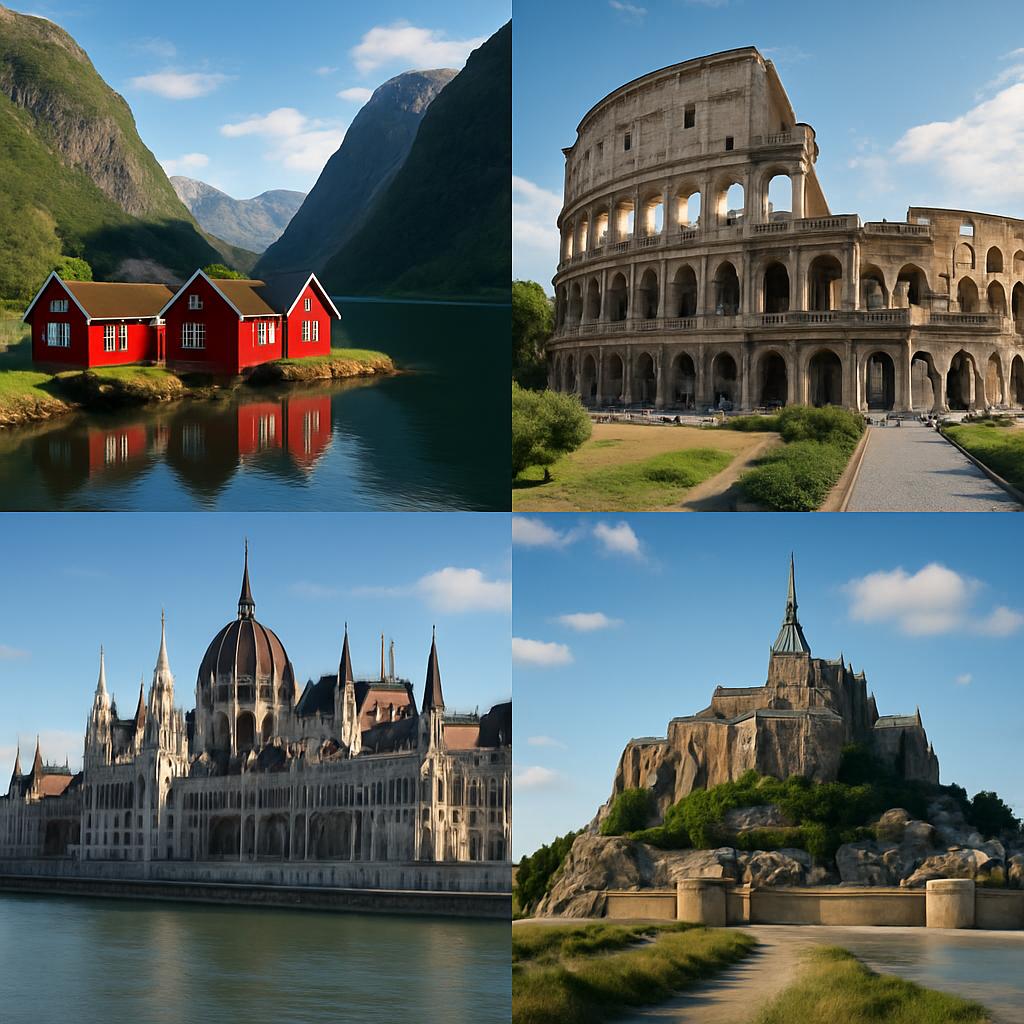
Northern Europe keeps refining its quiet luxuries — think design-forward hotels, nature access within an hour of urban centers, and ferry routes that double as slow travel experiences. Scandinavia remains brilliant for outdoor lovers and design fans alike.
Southern Europe is the story of rediscovery: lesser-known islands and inland towns are filling gaps left by over-touristed hotspots. Food culture, wineries, and seasonal festivals are richer and more intimate when you step off the beaten path.
Eastern Europe is a standout value proposition in 2025. Cities like Ljubljana, Lviv, and Tbilisi offer strong cultural calendars, affordable dining, and fascinating layers of history without the shoulder-to-shoulder crowds.
Western Europe: refinement and accessibility
Western Europe marries classic attractions with accessibility upgrades. Rail corridors have new high-speed connections, and international sleeper trains are making a comeback, connecting cities overnight and saving hotel costs.
Paris and Amsterdam remain essential, but they’re smarter about crowd management and offer more ticketed time slots for major sites. That makes visits less frantic and more meaningful if you plan in advance.
Northern lights and calm coasts: Scandinavia and Iceland
Iceland remains a must for dramatic landscapes, though visitor caps and increased conservation fees mean it’s wiser to plan logistics early. Reykjavik keeps surprising with inventive dining and a compact, walkable cultural scene.
In Scandinavia, Bergen, Gothenburg, and Aarhus are where contemporary culture meets nature. The region’s emphasis on cycling and public transport makes exploring less stressful and surprisingly affordable if you opt for city cards and regional passes.
Top destinations and why they matter in 2025
Choosing a destination now is less about headline tourism and more about the quality of experience you’ll have. Below are cities and regions that offer fresh rewards in 2025 — cultural richness, good value, and infrastructure that supports enjoyable travel.
Each subsection includes what’s new, the best time to visit, and a quick tip to make the most of your stay. These are practical selections aimed at maximizing time and minimizing common travel headaches.
Lisbon and Portugal’s coastal charms
Portugal’s coastal towns continue to grow on travelers. Lisbon offers exceptional food scenes and day trips to Sintra or the surf towns of Ericeira and Nazaré, which are cleaner and less crowded than they were a few years ago.
Porto’s Douro wine region is better connected by rail, and small-inn hospitality has improved across rural Portugal. Visit in late spring or early fall to enjoy warm days and thinner crowds.
Rome and Italy’s deeper discoveries
Rome still dazzles, but Italy’s quieter treasures — Puglia’s olive groves, Umbria’s hill towns, and the Dolomites — are displaying superior hospitality and new boutique accommodations. Culinary tours focusing on producers rather than restaurants are particularly rewarding.
Travelers report more meaningful interactions when they book local food or craft tours; skip the largest groups and opt for family-run experiences to taste real regional identity.
Athens and Greece beyond the islands
Greece’s islands remain alluring, yet mainland Greece is staging a renaissance. Athens pairs world-class museums with a lively street-food scene and new neighborhoods that are safer and more walkable after recent urban investments.
For a quieter holiday, inland towns and lesser-known islands are easier to reach due to expanded ferry lines and better regional air service.
Budapest and Eastern European value
Budapest offers thermal baths, riverfront promenades, and a thriving arts scene at a fraction of Western European prices. Nearby Hungary and its neighbors are convenient bases for multi-country itineraries by train or bus.
For creative travelers, Warsaw and Kraków provide modern museums and emerging culinary scenes, while still being accessible for budget-conscious visitors.
Croatia and the Adriatic coast
Croatia’s coastline is as beautiful as ever, but the country’s inland parks and small towns are getting attention for sustainable tourism initiatives. Split and Dubrovnik have measures to manage peak-season crowds, which improves the experience for those who plan around busy dates.
Consider late spring or early fall for warmer weather, fewer tourists, and better prices on ferries and accommodations.
Practical planning: save time and avoid common pitfalls
Smart travel in 2025 is about timing and technology. Booking timed-entry tickets for museums and attractions will avoid long waits, and many cities now sell combined mobility-and-attraction cards that reduce friction and cost.
Use local transport apps and pay attention to regional passes for trains; they often cover ferries and buses too. A little digital prep saves real time on the road.
Packing, insurance, and health
Packing lighter remains a winning strategy: European cities are easier to navigate with less luggage, and carry-on travel cuts connection stress. A compact rain jacket and neutral layers will cover most spring and fall conditions.
Travel insurance that covers trip interruption and health is still advisable, especially for longer stays or multi-country itineraries. Check for coverage of outdoor activities or medical evacuation if you plan mountain trekking or winter sports.
Money and communication
Contactless payments and mobile wallets are ubiquitous in Europe, but carry a small amount of local currency for markets and remote areas. Notify your bank of travel plans and consider a travel card with low foreign transaction fees.
Sim cards and eSIMs are affordable across most countries; buying data at entry points or online before departure will keep you connected for maps and real-time reservations.
Sustainable and responsible travel choices
Sustainability is no longer just a buzzword — it’s a practical travel filter. Look for destinations that limit visitor numbers to protect ecosystems and communities, and favor operators who invest in local employment and conservation.
Small behavioral choices add up: use refillable water bottles where safe, avoid single-use plastics, and choose public transport or walking whenever feasible. Your hospitality dollars should reward local tables and craftspeople rather than large international chains.
Volunteer tourism and community initiatives
Short volunteer stays tied to conservation or cultural preservation projects can enrich a trip, but they require due diligence. Prefer programs with transparent outcomes and direct benefit to local communities rather than those that rely on constant volunteer turnover.
Whenever possible, book local guides and small businesses directly. This approach sends more value into the community and often leads to more authentic experiences.
Where to splurge and where to save
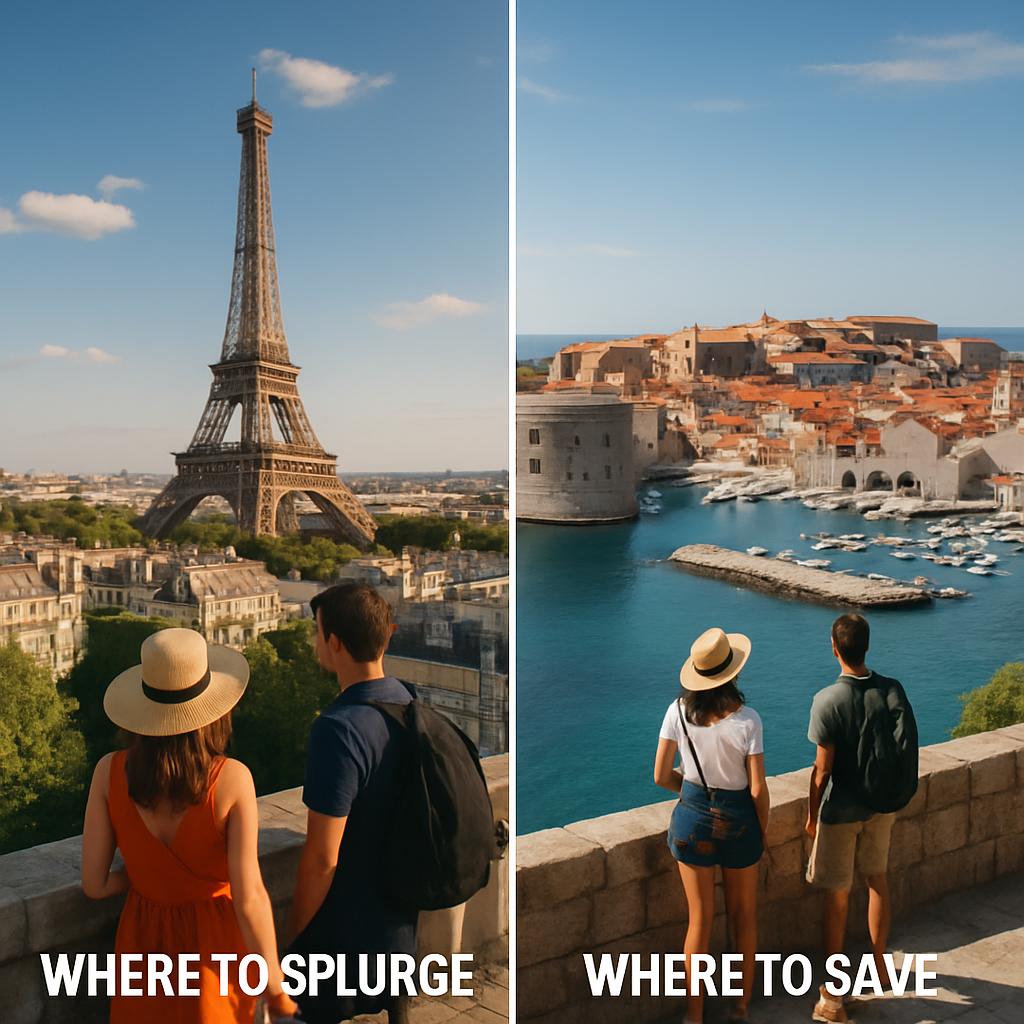
Spend on experiences that are uniquely local: a private chef in a Tuscan farmhouse, a guided hike with a local naturalist, or a concert in a historic venue. These moments are hard to replicate later and often represent real value.
Save on basics like travel between cities by using regional rail passes or night trains. Also, food markets and casual neighborhood eateries provide excellent culinary experiences at a fraction of fine-dining prices.
| Destination | Best time to visit | Why go in 2025 |
|---|---|---|
| Lisbon, Portugal | Apr–Jun, Sep–Oct | Improved rail links and a thriving food scene |
| Reykjavik, Iceland | Jun–Aug (midnight sun) or Sep–Mar (northern lights) | Stricter conservation measures improve nature experiences |
| Budapest, Hungary | Apr–Jun, Sep–Oct | Great value, thermal spas, and cultural events |
| Dubrovnik, Croatia | May–Jun, Sep | Managed tourism reduces overcrowding in shoulder seasons |
Festivals, food, and culture not to miss
Europe’s festival calendar in 2025 mixes longstanding traditions with contemporary music and film events. Smaller regional festivals offer food, craft, and performance with far less competition for tickets than major international festivals.
Food markets continue to be social hubs where you can sample regional produce and meet artisans directly. Book a market-focused walking tour or talk to stall owners — those conversations will shape dinner plans for the week.
Local experiences that change perspective
Try to schedule one immersive local experience per destination: a cooking class in a family home, a visit to a cooperative winery, or a behind-the-scenes museum tour. These moments are the best antidote to generic tourism.
When I spent a week in a small Catalan town, a single afternoon in a family-run cheese producer lead to a neighborly dinner and invitations to a village festival I never would have discovered otherwise. Those are the travel memories that last.
Transport strategies: trains, flights, and driving
Trains are a top choice for convenience and comfort between many European cities, and recent service expansions have increased options. Night trains return as practical ways to save both time and a hotel night.
Low-cost flights are still relevant for long legs, but factor in extra time and transport to and from secondary airports. For rural exploration, renting a car is often the only practical option; choose hybrid models where possible and expect to pay tolls in several countries.
Apps and passes worth knowing
Download regional transit apps and digital rail pass platforms before you leave. They often provide real-time updates, platform changes, and last-minute seat reservations that local kiosks can’t match.
Consider a Eurail or Interrail pass only if you plan multiple long-distance train journeys. For shorter, planned itineraries, point-to-point tickets purchased in advance can be cheaper and more flexible.
Preparing for surprises and staying flexible
Even the best-laid plans benefit from built-in flexibility. Book refundable accommodations for at least the first few nights in a new country, and leave space in your itinerary for a local recommendation or weather-dependent activity.
Carry a small buffer in your schedule for the unexpected — a festival you’ll want to join, a day of thick fog that grounds flights, or a perfectly timed invitation from a local artisan. Those unscripted detours often become trip highlights.
Europe in 2025 rewards travelers who plan but don’t over-plan: those who pick a region, leave room to wander, and prioritize connection over checklist completion. Whether you crave remote beaches, urban design, or a deep dive into regional cuisine, this year offers more routes to meaningful experiences than many expect.
Ready for more reading and up-to-date travel innovation and technology tips? Explore additional articles and guides on our site to help craft your next trip: https://themors.com/technology-innovation-news/ and for broader content visit https://themors.com/.

